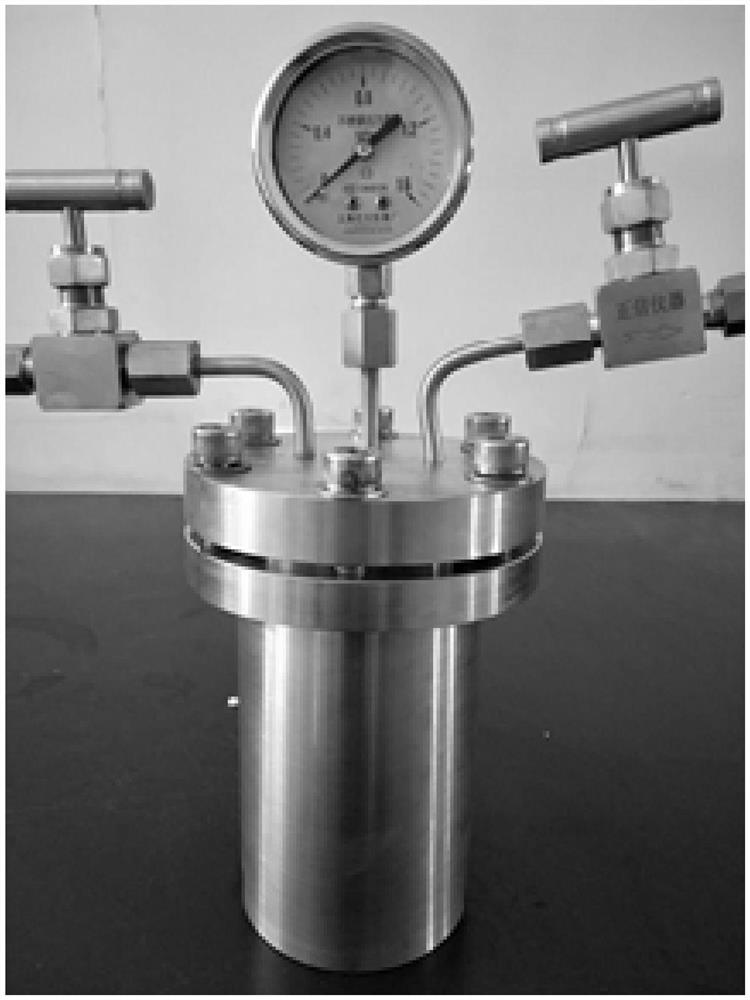Method for enhancing biochemical treatment of high-salt organic wastewater by removing high-salt toxicity on microorganisms
A technology for organic wastewater and biochemical treatment, applied in the direction of biological water/sewage treatment, chemical instruments and methods, special compound water treatment, etc., can solve the problems of microorganisms spending a lot of time and cost, increase salt tolerance, improve biological activity, The effect of enhancing the activity
- Summary
- Abstract
- Description
- Claims
- Application Information
AI Technical Summary
Problems solved by technology
Method used
Image
Examples
Embodiment 1
[0033] Treatment object: An experimental wastewater with a CODcr concentration of 3000mg / L, a salinity of 20000mg / L, a pH value of 6-8, and a temperature of 28-32°C.
[0034] Treatment effect: Unacclimated activated sludge (the sludge has a high removal rate of COD under low-salt conditions, up to 98%) is added to the reactor, compressed air is introduced into the reaction device, and the internal pressure of the reactor is controlled At 0.3MPa, and adding 0.5mM betaine, the reactor runs for 24 hours, and the COD drops below 200mg / L. The COD removal rate is greater than 93%, and the water effluent effect is better. Compared with the removal rate of about 50% in the normal pressure bioreactor by measuring COD, there is a relatively obvious improvement. Pressurization alone has a COD removal rate of 82%, and betaine alone and a COD removal rate of 77%. Compared with the two methods of the present invention, the effect of simultaneous use is significantly different.
Embodiment 2
[0036] Treatment object: an experimental wastewater with a COD concentration of 3000mg / L, a salinity of 45000mg / L, a pH value of 6-8, and a temperature of 28-32°C.
[0037] Treatment effect: Unacclimated activated sludge is added to the reactor, compressed air is introduced into the reaction device, the internal pressure of the reactor is controlled at 0.4MPa, and 1mM glycerin is added, the reactor runs for 24 hours, and the COD drops below 300mg / L. The COD removal rate is greater than 90%, and the water effluent effect is better. Compared with the removal rate of about 30% in the normal pressure bioreactor, there is a relatively obvious improvement. With pressure alone, the COD removal rate is 76%, and with glycerol alone, the COD removal rate is 74%. The two groups of examples all show that after the treatment of high-salt toxicity by this method, the effluent effect is better than that of non-detoxification, which is beneficial to the enhanced biochemical treatment of high...
PUM
 Login to View More
Login to View More Abstract
Description
Claims
Application Information
 Login to View More
Login to View More - R&D
- Intellectual Property
- Life Sciences
- Materials
- Tech Scout
- Unparalleled Data Quality
- Higher Quality Content
- 60% Fewer Hallucinations
Browse by: Latest US Patents, China's latest patents, Technical Efficacy Thesaurus, Application Domain, Technology Topic, Popular Technical Reports.
© 2025 PatSnap. All rights reserved.Legal|Privacy policy|Modern Slavery Act Transparency Statement|Sitemap|About US| Contact US: help@patsnap.com

